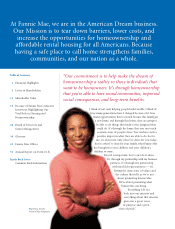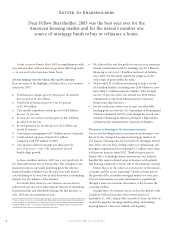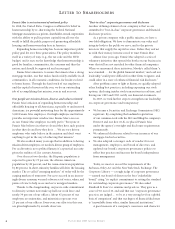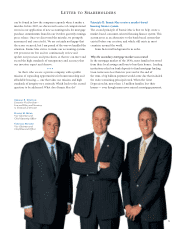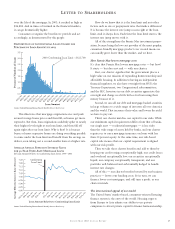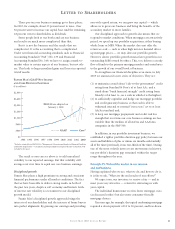Fannie Mae 2003 Annual Report Download - page 7
Download and view the complete annual report
Please find page 7 of the 2003 Fannie Mae annual report below. You can navigate through the pages in the report by either clicking on the pages listed below, or by using the keyword search tool below to find specific information within the annual report.
5
THOMAS E. DONILON
Executive Vice President –
Law and Policy and Secretary
to the Board of Directors
DANIEL H. MUDD
Vice Chairman and
Chief Operating Officer
TIMOTHY HOWARD
Vice Chairman and
Chief Financial Officer
can be found in how the company responds when it makes a
mistake. In late 2003, we discovered a series of computational
errors in our application of new accounting rules for mortgage
purchase commitments found in our October quarterly earnings
press release. Once we discovered the mistake, we promptly
announced and corrected it. We are certainly not happy that
the errors occurred, but I am proud of the way we handled the
situation. Fannie Mae strives to make our accounting systems
100 percent error free and we continuously review and
update our processes and procedures so that we can meet and
exceed the high standards of transparency and accuracy that
our investors expect and deserve.
❋ ❋ ❋
So that’s who we are: a private company with a public
mission of expanding opportunities for homeownership and
affordable housing — one that takes our mission and high
standards of integrity very seriously. Which leads to the second
question to be addressed: What does Fannie Mae do?
Principle II: Fannie Mae creates a market-based
housing finance system
The second principle of Fannie Mae is that we help create a
market-based, consumer-oriented housing finance system. This
system arose as an alternative to the bank-based system that
existed before our creation, and which still exists in most
countries around the world.
Some historical background is in order.
Why the secondary mortgage market was created
In the mortgage market of the 1930s, most families borrowed
from their local savings and loan to buy their homes. Lending
institutions relied on bank deposits to fund mortgage lending.
Loan terms were less than ten years and at the end of
the term, a big balloon payment would come due that included
the entire remaining principal owed. When the Great
Depression hit, more than 1.5 million families lost their
homes — even though many never missed a mortgage payment.
LETTER TO SHAREHOLDERS


